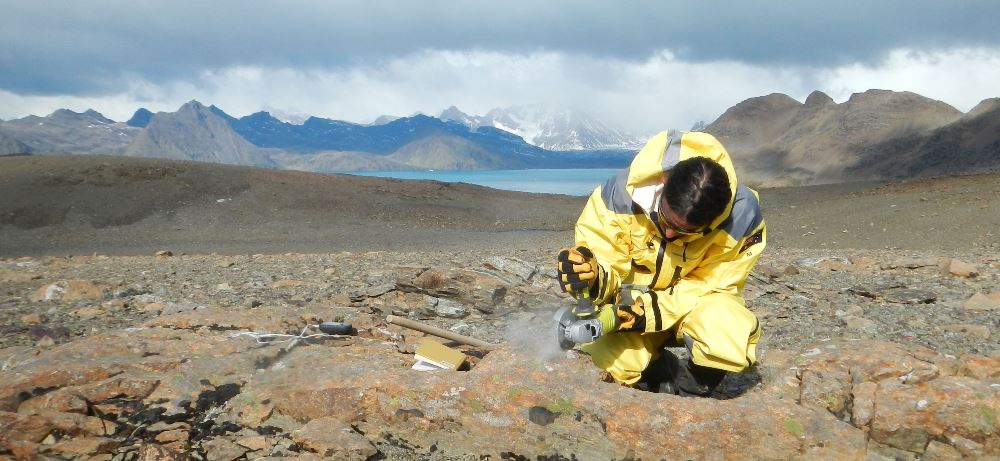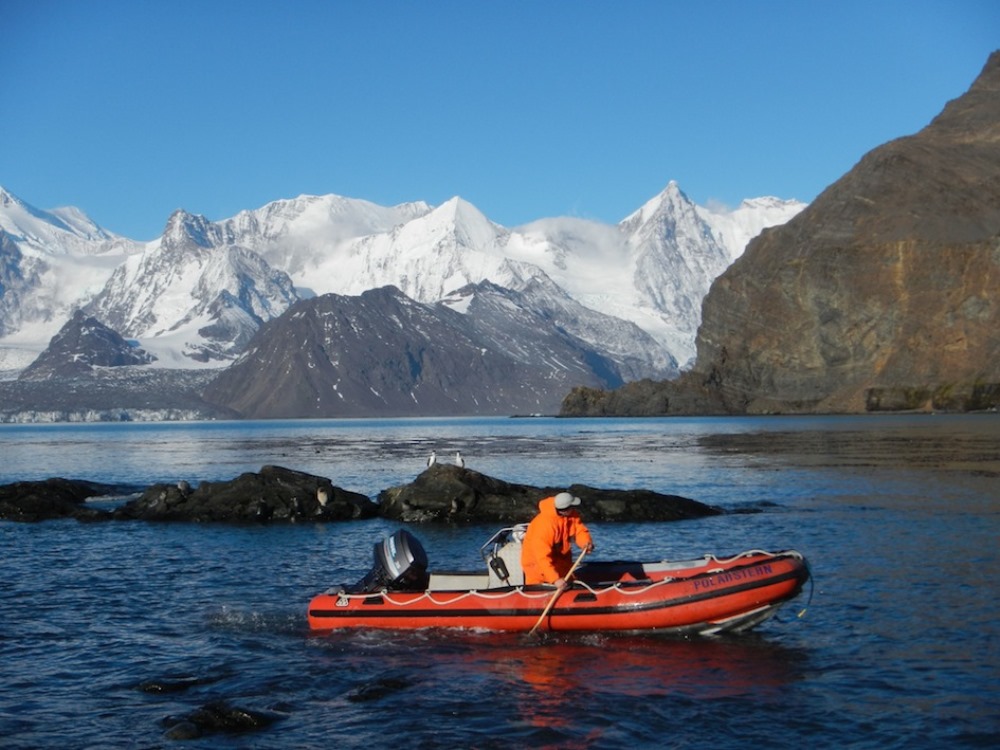Marcus Butler
17 March 2017: A study of long gone glaciers on a remote island is providing new information on the impact of climate change on the Antarctic ice caps.
A geological scientist from the University of Canberra has helped shed new light on what was happening on the tiny island of South Georgia during the last ice age.
New research published today in the journal Nature Communications has revealed the sub-antarctic island of South Georgia – located approximately 1,500 kilometres from the Antarctic mainland and famous for its wildlife – was covered by a massive ice cap during the last ice age.
University of Canberra associate professor of science Duanne White was part of a research team led by the University of Exeter, to discover evidence of the scale of the past ice cap.
“We found that ice on South Georgia was sensitive to short-lived cooling and warming and would grow and shrink dramatically as the climate changed after the last ice age,” Dr White said.
“This distant history is important in understanding the changes happening to the Antarctic ice cap today. South Georgia is small compared to Antarctica, but as it’s located in a part of the sub-Antarctic that is sensitive to changes in climate, it can be considered a ‘sentinel’ to climate change.”
“Any observer today will see that sub-Antarctic glaciers are in retreat, shrinking dramatically, as we experience a warming atmosphere and ocean,” Dr White said. “Our work on South Georgia shows its glaciers were sensitive to climate change in the past as the last ice age ended.
Dr White said that improving our understanding of the history of glacier behaviour on South Georgia is giving scientists a long-term context for the changes happening in Antarctica right now.
University of Exeter Lecturer in Physical Geography and lead researcher, Dr Alastair Graham, said the current biodiversity of life found on South Georgia would have been pushed to the limit during the last ice age.
“The survival of ocean ecosystems is linked heavily to patterns of glaciation, so it is very interesting to know where and how sea-bed creatures lived through the ice age, and how the cycles of ice-cap change have influenced the biodiversity,” Dr Graham.
“Life must have really only survived at the edges, at and beyond the ice margins. The island’s biological communities would have been driven to small mountain and seabed refuges.”
A team of researchers from the UK, Germany and Australia visited the island twice and used sonar technology mounted to the hulls of ice-breaking vessels to reveal patterns of glacier growth and retreat.
They discovered patterns which show the extent of glaciers in the past, where they had essentially bulldozed ridges into the seabed.
The researchers also used weighted gravity corers to retrieve samples of sediment from the ice-carved troughs that radiate from the island.
The project was led by the University of Exeter, UK, and funded by the British Natural Environment Research Council (NERC).
The article ‘Major advance of South Georgia glaciers during the Antarctic Cold Reversal following extensive sub-Antarctic glaciation’ is available online: https://dx.doi.org/10.1038/NCOMMS14798




